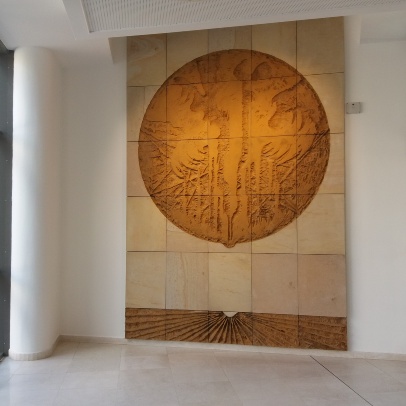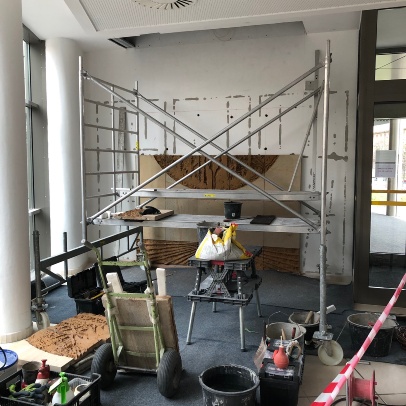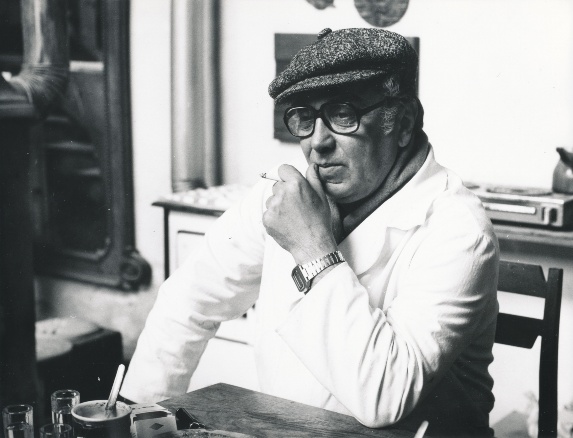Name: The Birth of Iron
Author: Vladislav Gajda
Dating: 1968-1970, in 2019 moved to VŠB-TUO
Location: originally at the entrance to the social building of Plant 2 (New Steelworks) of the former Vítkovice Ironworks (today Vítkovice Steel), removed and relocated due to the demolition of the building, from 2019 in the interior of the entrance area of the New VŠB-TUO auditorium
Execution: relief made of blasted Hořice sandstone, originally partially plated with gold
SAVED RELIEF
Gajda’s relief The Birth of Iron was originally created for the building of the New Steelworks in Vítkovice, where it was also located from its completion in 1970 until 2019. Jakub Ivánek (author of the ostravskesochy.cz database) drew attention to the threat to the relief during the planned demolition of the original building in 2018, and in cooperation with VŠB-TUO, the relief was saved, relocated and included in the university art collection.
The motif of the relief Coal and Iron created for VŠB is very close to The Birth of Iron, which was designed at the same time for the so-called New Steelworks of Vítkovice Ironworks (1969–1970). If we imagine the Poruba relief without the technical notches in the upper part of the central circle of, which copy the outline of the Prometheus exterior relief, we can see, in the case of Vítkovice relief, an almost identically shaped circular element. On the Vítkovice relief, the fumes and fires pouring into the sky are more distinct (without the addition of hatches and capillary lines) and supplemented by impressive gold-plating of the structure. They thus reveal more of the mythological dimension of the work, when the smoke in the sky transforms into the wings of a mythical phoenix rising from the ashes. When comparing the two works, Vítkovice’s The Birth of Iron helps to realize the relationship between Poruba’s Coal and Iron in the university lobby with Prometheus in the exterior, also based on a symbolic level referring to mythology. In addition, it sheds light on its name (Coal and Iron), because in the first plan, the theme of mining is particularly evident in the Poruba relief, while metallurgy is somewhat subdued in the overall expression.


